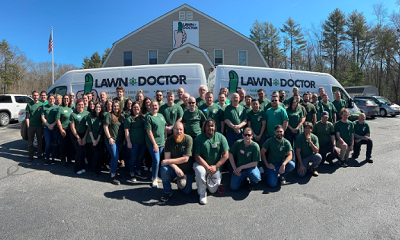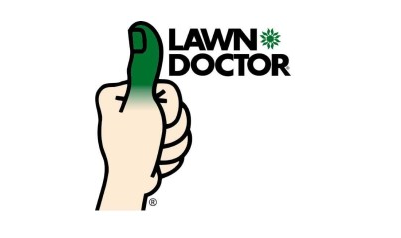
Top Spring Lawn Prep Tips to Do Now to Reap the Benefits All Summer, From Preventing Crabgrass to Seeding Do’s and Don’ts
Lawn Doctor of Massachusetts today announced its top tips for local homeowners to prepare their outdoor properties now for a lush lawn and thriving outdoor space to enjoy from Spring through Fall. Tom Norton, the president of Lawn Doctor, took over his family’s business from his father, Jim Norton, continuing the Norton family lawn care legacy that began in 1988. As Spring approaches on March 19th, Massachusetts residents often face challenges such as late spring frost or early warm temps. These factors impact the ability to have lush green lawns in time for the first big spring weekend outdoors like Memorial Day weekend.
“We can offer the expertise and equipment to transform lawns into something special, whether it’s a single service or an entire lawn care maintenance plan, but we want residents to know there are some simple things they can do and should be aware of to ensure your outdoor space meets your expectations,” said Tom Norton, Boston’s Lawn Doctor and president of Lawn Doctor of the South Shore.
Boston’s Lawn Doctor Tom Norton’s Spring Tips for Healthy Lawn in 2024
- Understand Your Landscape
Grass is a plant that needs certain growing conditions in order to do well. Step one to understanding why grass isn’t currently growing in your yard is to consider your landscape. For example, does the lawn area receive a lot of sunlight throughout the day, or is it shady? Are there any trees in your lawn and what kind of trees are they? When you touch the soil, what does it feel like – loose and crumbly or hard as concrete? Determining the kind of grass and soil you have will make your job maintaining a lush lawn much easier and more effective.
- Clean-up
Some years are worse than others, but a general clean-up will benefit your lawn in many ways. Too much debris can suffocate the lawn and prevent the emergence of new growth. Raking up even just a few sticks and leaves not only helps get the lawn looking better instantly but it gives you the opportunity to inspect your lawn thoroughly and assess any issues.
- Rake
Raking to clean up is great, but if you have a thick layer of thatch, you may have to rake a little more thoroughly. Thatch is the layer of decomposing plant material that sits on the surface of the soil. When it accumulates and gets compacted it can prevent the roots of your grass from getting water, fertilizer, oxygen and other nutrients.
- Manage the Moss
Every winter your lawn will stop growing and go into winter dormancy. Meanwhile, moss continues to grow. In the early spring, moss often looks worse than it is. Once the turf starts to grow moss will become less noticeable. Under some conditions, such as heavy shade or habitually moist areas, moss will naturally grow thick and dense. In this case, moss can only be handled by removing it manually with a rake or dethatcher. To help prevent moss and control the spread of it, Norton recommends a heavy calcitic lime application in the spring and, depending on the soil pH, sometimes again in the fall. Seeding in the fall and proper nutritional care and maintenance can keep the moss from coming back.
- Fertilize
In the early spring, you’ll notice that your grass is pale green, gray or even yellow, depending on the variety of grass you have. As it comes out of dormancy, it will naturally green up. It is recommended to have the first lawn service consist of a high-nitrogen fertilizer with other essential nutrients as well as weed control and crabgrass preventative. This service will wake your grass right up and make it look like winter never happened.
- Prevent Crabgrass
Did you know there’s a deadline to address crabgrass? If you don’t treat it by a certain time – which is completely dependent on temperature of the soil – homeowners can be left with crabgrass all season. “If it’s a warm March, as it has been, the time is approaching for treatment. Warm spells accelerate germination and we’ve certainly had a few of those,” added Norton. Do not underestimate the importance of pre-emergent.
- Be Strategic with Seeding
Turf grass focuses growth on roots in fall and shoots in spring, so spring seeding is not as effective as fall for New Englanders. Many homeowners feel that if they seed heavy now it will pay off by summer when in actuality, it’s often best to do it in the fall.
- Embrace Technology
It sounds strange, but premium lawn care should involve using technology and know-how usually reserved for golf course maintenance to nurture homeowners’ lawns. If you work with a professional lawn care expert, you can reap the same benefits of a golf course green using state-certified technicians. Enriched, slow-release products that are packed full of critical nutrients, like nitrogen, and get released steadily into your soil over an extended period of time, using Lawn Doctor’s State-of-the-art Turf Tamer® application equipment. It’s designed with ground-metered technology for precision applications and consistent-looking new growth all season.
About Lawn Doctor
 Lawn Doctor of South Shore is more than just a lawn care company – it is a service company at heart – one that’s dedicated to total satisfaction. Lawn Doctor has the most knowledgeable technicians, using state-of-the-art technology, and the exact right services your lawn needs to ensure beautiful results. Whether your lawn needs fertilization, weed control or a comprehensive, year-round maintenance plan, Boston’s Lawn Doctor Tom Norton and his team have the knowledge, equipment and services that can take your lawn to the next level.
Lawn Doctor of South Shore is more than just a lawn care company – it is a service company at heart – one that’s dedicated to total satisfaction. Lawn Doctor has the most knowledgeable technicians, using state-of-the-art technology, and the exact right services your lawn needs to ensure beautiful results. Whether your lawn needs fertilization, weed control or a comprehensive, year-round maintenance plan, Boston’s Lawn Doctor Tom Norton and his team have the knowledge, equipment and services that can take your lawn to the next level.
For more information, visit https://www.lawndoctor.com/southshore-ma/, call 781.826.2920 and follow Lawn Doctor of South Shore on Instagram at @lawndoctor.ma.









